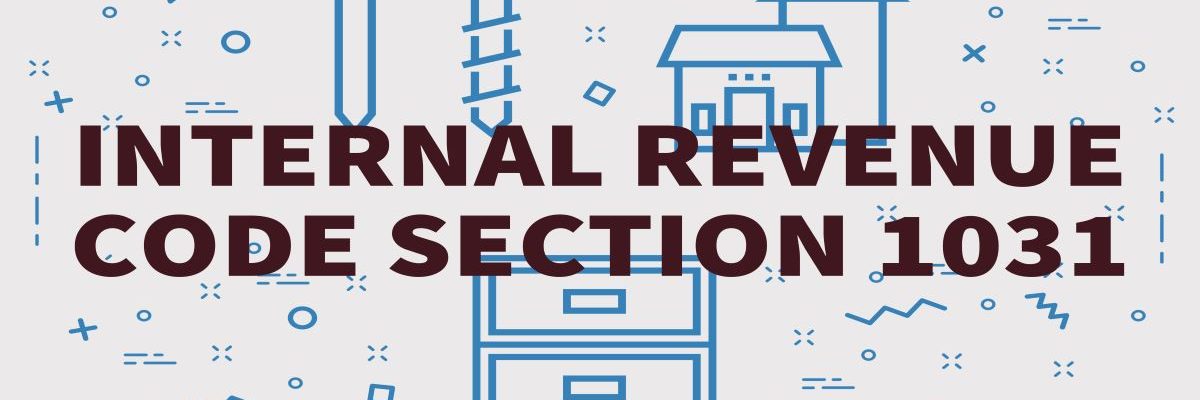
A Quick Guide to 1031 Exchanges
1031 Tax Code at a Glance
A 1031 exchange allows property investors to defer tax consequences on the sale of an investment property if the sale proceeds are used to acquire a new property. This opens up a world of options for investors to diversify and improve their portfolios without being punished by the burden of additional taxes! Let’s talk details.
According to Section 1031(a), “No gain or loss shall be recognized on the exchange of property held for productive use in a trade or business or for investment if such property is exchanged solely for property of like kind which is to be held either for productive use in a trade or business or for investment.”
This means that an investor can sell one property and trade into a new property without paying capital gains taxes. It is worth noting that all exchanges must abide by the guidelines outlined in Section 1031 of the IRS code.
Properties that Qualify for a 1031 Exchange
Investment properties qualify for a 1031 exchange. Investment properties consist of rental homes and commercial buildings, which include single- and multi-tenant retail buildings, apartment buildings, office complexes, and industrial parks.
Properties which are occupied by an individual may partially qualify for a 1031 exchange. For example, if an investor lives in a duplex and rents out one half of the property, the proceeds from the rental unit could be utilized in an exchange.
Properties that Do NOT Qualify for a 1031 Exchange
An individual’s primary residence would not qualify for an exchange. If the investor would like to exchange this property, they would need to convert the property to a rental unit.
Basics of a Like-Kind Exchange
When an investor trades from one property to another, they must trade into a like-kind property, but “like-kind” can be a fuzzy term. Let’s clarify it. According to the IRS, a like-kind property is
“property of the same nature, character, or class. Quality or grade does not matter. Most real estate will be like-kind to other real estate. For example, real property that is improved with a residential rental house is like-kind to vacant land. One exception for real estate is that property within the United States is not like-kind to property outside of the United States. Also, improvements that are conveyed without land are not of like kind to land.”
Time Requirements and Identification Process in a 1031 Exchange
1031 exchanges involve strict timelines – Investors must be prepared to meet all deadlines to avoid tax consequences.
1031 Timeline
From the time of closing on the relinquished property, an investor has 45 days to identify potential replacement properties and 180 days from closing to acquire said replacement property.
1031 Identification Process
During their 45-day timeframe, an investor can identify up to three properties as potential replacement properties. If they choose to identify or purchase multiple properties, they must adhere to one of the three following guidelines:
- Identify up to three properties of any value with the intent of purchasing at least one.
- Identify more than three properties with an aggregate value that does not exceed 200% of the market value of the relinquished property.
- Identify more than three properties with an aggregate value exceeding 200% of the relinquished property, knowing that 95% of the market value of all properties identified must be acquired.
Typically, an investor simply needs a description, but the wrong description could disqualify the property from nomination. Be sure to clearly identify your properties!
What happens if an investor uses only part of their proceeds in an exchange?
If an investor utilizes only a portion of their proceeds in a 1031 exchange, they will be responsible for paying capital gains taxes for the proceeds not utilized in the exchange. The amount they will owe in taxes varies depending on the length of time for which they owned the asset, the taxable income on the asset, and their filing status.
- If the property is owned for less than one year, then the taxpayer would be required to pay according to their federal income tax bracket (ranging from 10%-37%).
- If the property was owned for over one year, then the taxpayer would pay either 0%, 15%, or 20% depending on their income and filing status.
Benefits of a 1031 Exchange
In addition to the multitude of benefits commercial real estate investing already grants investors, a 1031 exchange allows investors to improve their portfolios position while deferring all taxes.
For example, an investor can trade into a more valuable asset, using their equity from the initial property as a down-payment for their replacement properties. This can increase a client’s cash flow and improve their equity position.
A 1031 exchange also empowers an investor to diversify their portfolio. By owning multiple real estate assets, an investor minimizes risk, preserves capital, and generates more consistent returns.
Getting Started on a 1031 Exchange
In order to participate in a 1031 exchange, an investor must work with an exchange facilitator. These include one of the following:
- A qualified intermediary, or
- A “transferee, escrow holder, trustee, or other person that holds exchange funds for you in a deferred exchange under the terms of an escrow agreement, trust agreement, or exchange agreement.”
An exchange facilitator will walk an investor through the steps of a 1031 exchange, help them identify whether their property qualifies, and facilitate any transaction considered a 1031 exchange.
It is imperative to work with a trusted and experienced exchange facilitator; one wrong step could result in immense financial consequences.
If you are interested in participating in a 1031 exchange, we would be thrilled to discuss your opportunities for 2022 and introduce you to a qualified intermediary who can help you confidently make the most of the benefits that 1031 exchanges offer.